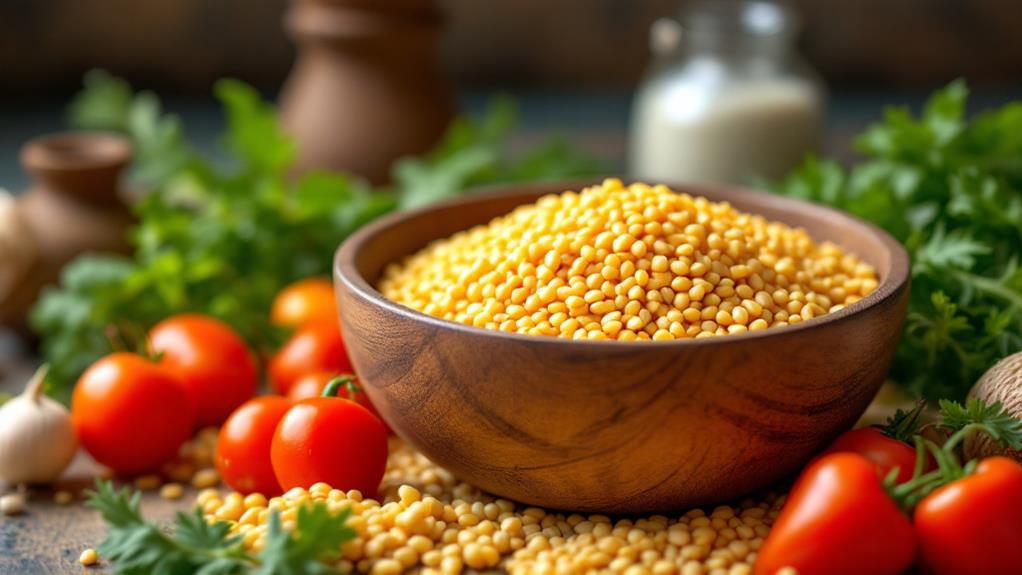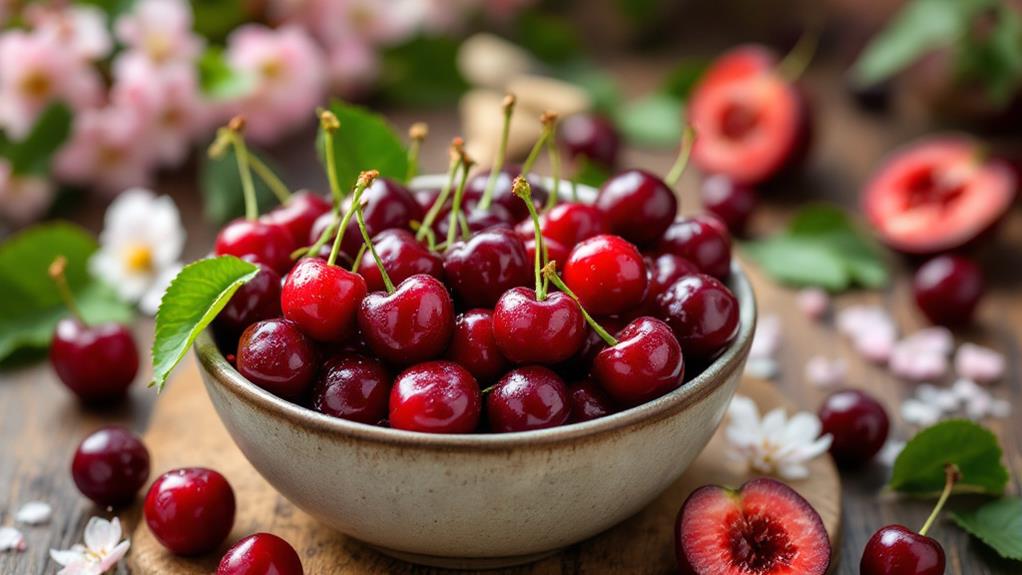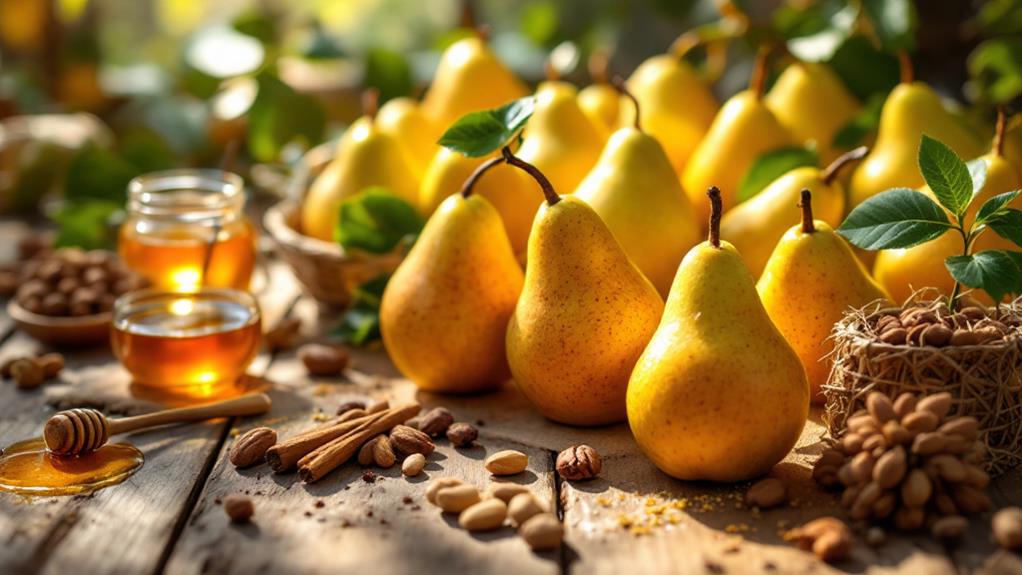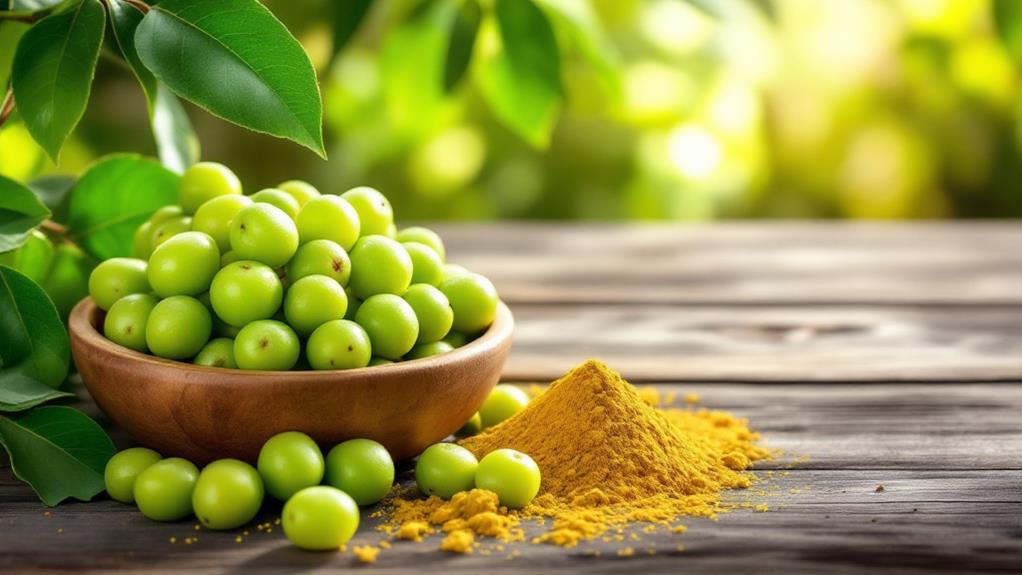All You Need to Know About Physalis: Health Benefits and Uses
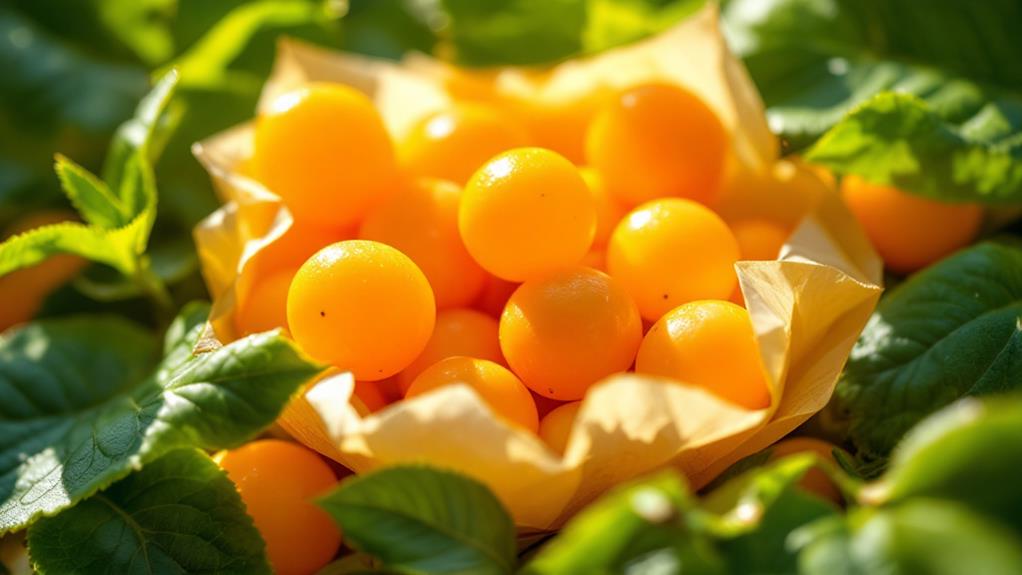
You'll find that Physalis, or Cape gooseberry, not only adds zing to your dishes but also enhances your health. With just 53 calories per serving, it's a nutritious snack packed with dietary fiber to aid digestion and antioxidants to support eye health. Rich in iron, calcium, and potassium, Physalis can help strengthen your immune system and possibly reduce heart disease risk. Enjoy them fresh, dried, or in jams for a versatile culinary experience. However, eat them in moderation, particularly if you're sensitive to nightshade vegetables. Investigate further to uncover more about these lively, healthful berries.
Physalis Taxonomy and Origin
In the domain of botanical taxonomy, Physalis, scientifically known as *Physalis peruviana*, captures interest with its unique classification. Belonging to the nightshade family, Solanaceae, Physalis shares its lineage with other notable plants like tomatoes and potatoes. Despite its common name, Cape gooseberry, it's unrelated to true gooseberries. This misnomer likely arises from its intriguing calyx shape and its widespread cultivation history.
Your exploration into the origin of Physalis takes you to the heart of South America, specifically the Andean region. Here, in the lush terrains of Peru, Physalis, also known locally as aguaymanto, initial flourished. The species name "peruviana" aptly highlights this South American connection. Carl Linnaeus originally described this fascinating plant in 1763, embedding its Greek-derived genus name meaning "bladder," which reflects its unique husk-like appearance.
As a globetrotter, Physalis has spread beyond its native lands and found agricultural significance worldwide. You'll find it cultivated in distinct climates, from the tropical warmth of Colombia to the temperate zones of New Zealand and South Africa. Its adaptability makes it a valued crop in assorted agricultural sectors, thriving in tropical, subtropical, and temperate regions alike.
Nutritional Profile and Benefits
Golden berries, or physalis, pack a nutritional punch that makes them a valuable supplement to your diet. With only about 53 calories per serving, they're a low-calorie option that doesn't skimp on crucial nutrients. Rich in dietary fiber, they aid digestion and help you feel full longer. The vitamin C found in physalis enhances your immune system and supports skin health, covering a significant portion of your daily needs.
Physalis offers an impressive nutritional profile with a range of health benefits:
- Antioxidants: High in carotenoids like lutein and zeaxanthin, these protect against oxidative damage and support eye health, potentially preventing age-related macular degeneration.
- Polyphenol content: Offers anti-inflammatory properties and could slow the growth of cancer cells.
- Key minerals: Contains iron, calcium, potassium, and phosphorus, crucial for red blood cell production, bone health, and muscle function.
- Heart health: Regular consumption may reduce the risk of heart disease due to its nutrient density.
- Vitamin A and C: Important for maintaining a robust immune system and promoting general well-being.
Incorporating physalis into your diet can lead to a multitude of health benefits, making it a smart choice for anyone looking to enhance their nutritional intake.
Culinary Applications

When you investigate the world of culinary applications, you'll find that golden berries offer a delightful twist to many dishes. This adaptable fruit is perfect for improving flavors in a variety of recipes. Fresh golden berries can be enjoyed as a healthy snack or included in fruit salads, providing a sweet-tart flavor boost that's sure to please your palate. Their unique taste makes them ideal for sauces, chutneys, and jams, where they contribute both flavor and nutritional benefits.
If you're looking for a nutritious alternative, dried golden berries can be a great supplement to trail mixes or as a topping for yogurt and granola. These dried versions retain the fruit's nutritional benefits while offering a convenient, portable snack option. In baking, golden berries shine as they add a distinct flavor to muffins and cakes, elevating your homemade treats with their zesty essence.
In Latin America, golden berries often find their way into batidos, invigorating blended beverages that showcase the fruit's popularity and unique taste. Regardless of whether you're blending them into drinks or incorporating them into your dishes, golden berries prove to be a versatile ingredient, improving both the flavor and nutritional profile of your culinary creations.
Potential Risks and Precautions
Although golden berries offer numerous health benefits, it's vital to be aware of potential risks and take necessary precautions. Unripe golden berries contain solanine, a toxic compound that can lead to digestive issues and potential poisoning. To avoid these risks, make certain you consume only ripe golden berries. If you're among the individuals sensitive to nightshade vegetables, you might experience discomfort or adverse reactions, so it's wise to monitor your body's response.
Excessive consumption can also pose risks. High doses of golden berry juice have shown potential heart damage in animal studies, highlighting the significance of moderation. Stick to a recommended serving size of 1/4 cup of dried golden berries per day to prevent excessive sugar intake and digestive upset.
Proper storage is fundamental for maintaining the quality of your golden berries. Keep fresh berries in a cool, dry place and consume them within a few days after ripening to guarantee safety and freshness.
To summarize, consider these key points:
- Avoid unripe golden berries due to solanine content.
- Monitor reactions if sensitive to nightshade vegetables.
- Limit intake to 1/4 cup of dried berries daily.
- Store berries properly to maintain quality.
- Be cautious of excessive consumption and its effects.
Global Cultivation Practices

Across diverse climates around the world, Physalis, also known as Cape gooseberry, descends due to its adaptability, making it a popular crop in regions like Colombia, South Africa, and New Zealand. Its ability to thrive in tropical, subtropical, and temperate regions highlights its global cultivation appeal. This plant does well at elevations between 500-3,000 meters (1,600-9,800 feet), preferring well-drained sandy loam soil, full sun, and moderate rainfall of 800-4,300mm (31-169 inches) annually.
Propagation primarily involves seeds, with each Physalis fruit containing 100-300 seeds, although you might use stem cuttings for earlier flowering. This flexibility in propagation methods supports its widespread cultivation, especially in tropical regions. Harvesting occurs when the fruit turns bright yellow to orange, indicating peak flavor and nutritional value.
Global interest in Physalis has spurred breeding programs focusing on enhancing fruit characteristics and resistance to pests and diseases. These efforts aim to improve the quality and resilience of Cape gooseberry, ensuring it remains a valuable crop. With its unique flavor and health benefits, Physalis continues to enchant growers and consumers, cementing its place in global agriculture.

